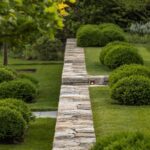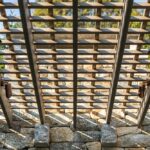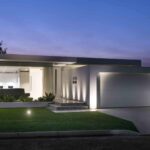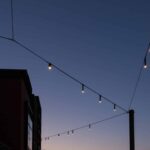Paint A Picture With Light And Shade
When designing your scheme, try to think of it in its entirety, rather than as separate parts. All the elements should fit together and be in balance. Remember that things visible during the day can be left in darkness, so you have the opportunity to make dramatic changes to your visible landscape.
Less Is More
Shadow is as important to your scheme as light, so don’t try to light everything. Instead retain some mystery. Also keep it subtle – very bright garden lighting can look brash and artificial.

Hide The Light Source
It is the lighting effect you want to see, not the fitting. So wherever possible, hide the light source – behind a shrub, perhaps a rock, a pot or a wall.
Experiment With Lighting Effects
Try throwing shadow onto walls, creating reflections in ponds or using backlighting to create interesting effects. The possibilities are endless.





Create A Scene
Create a different look with outdoor garden lighting at night compared with the appearance during the day. The night view will often be more dramatic than the day view. We use the term “picking out” for selecting what you want to highlight – at night you will only see what you illuminate, not the surrounding area.
Create Depth
Give your lighting scene a 3-dimensional effect by illuminating the background and well as foreground features. You will need more than one luminaire for this, however the effect will be much more dramatic.
Wattage And Beam Angles
The wide range of beam angles, wattages and accessory options means you can tailor each light source to create a precise effect. For instance, if you need to increase the beam throw of a lamp, try using a 20 watt lamp with a 10 degree beam angle, rather than upgrading to a 35 watt or 50 watt lamp.
Changing Lamps
When making a lamp change, always remove and inspect the failed lamp first to check that the replacement is the same wattage and beam angle. It is false economy to buy cheap lamps – ensure the replacement has a rating of at least 5000 hours.
Quality
Use the highest quality equipment and materials your budget will allow as it will last longer and offer more versatility. Hunza luminaires are all very durable, however you can work to a variety of budgets by opting for different finishes such as powder coated aluminium, copper or stainless steel.
Use the highest quality equipment and materials your budget will allow as it will last longer and offer more versatility.
Avoid Glare
When it comes to garden lighting, there’s no razzle in dazzle. So try to angle the light beams away from your lines of sight. Where this isn’t possible, use glare reducing accessories such as Glare Guards or Hex Cell Louvre Kits.
Careful Placement
Avoid installing garden lights under or within low shrubs or tall grasses when lighting exteriors. The beam of light needs a clear path from the fixture to the focal point so there are no shadows or reflections, unless you are aiming for a shadowy effect in which case the opposite applies. When lighting a deck, pay particular attention to where people sit and try to avoid glare. As with deck lights and other garden lights, the light source needs to be positioned so that you are not looking directly at the luminaire.
Placing Near Plants
If you’re installing lights in winter, remember that your herbaceous plants will often grow much larger in the summer. Try to avoid placing lights where they will be swamped by summer foliage.
Keep Your Stainless Steel Stainless
If you opt for stainless steel fittings, regular washing to remove salt spray will prevent surface staining. There are cleaning products for stainless steel on the market.
Taking Care Of Your Cable
Black, low-voltage, electrical cable is fairly invisible when placed on soil, but you can hide it safely by burying it under an inch or two of soil. Keen gardeners, however, might prefer to keep the cable on the surface to avoid accidentally damaging it when digging.
Installing Your Lighting Scheme
We recommend using a qualified electrician to install your lighting and make sure all the electrical circuits are protected by an RCD (ground leakage circuit breaker). Only use electrical equipment designed for exterior use with the appropriate IP rating. Avoid equipment that needs to be protected with plastic bags or temporary wrappings, use proper weatherproof enclosures and ensure all cable joints are waterproof (see Cable Joint Kit).

Heat
Halogen light sources do generate a considerable amount of heat, therefore precautions should be taken when considering their location, particularly at low level in public areas where children may come into contact. Normally there is always a solution, such as using Plug-in LED lamps. If in doubt, please contact your local Hunza distributor for advice.







